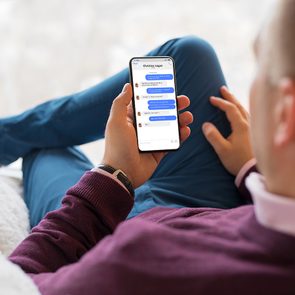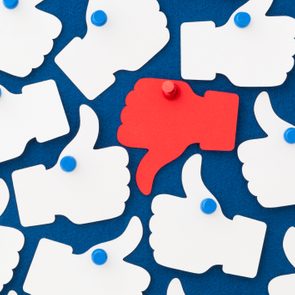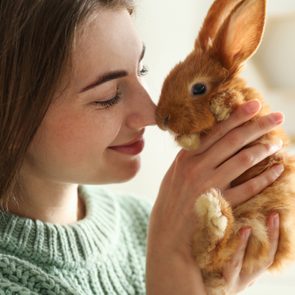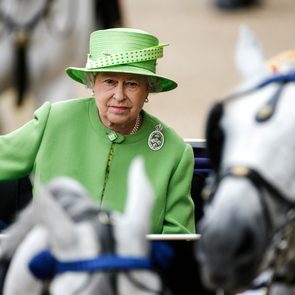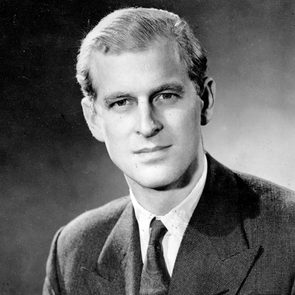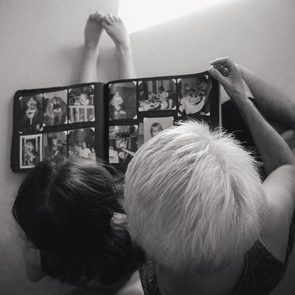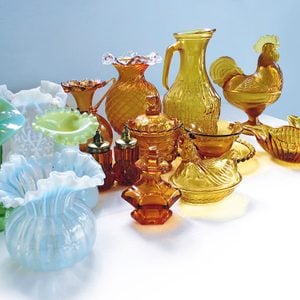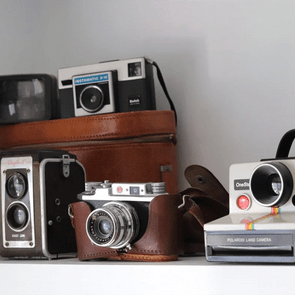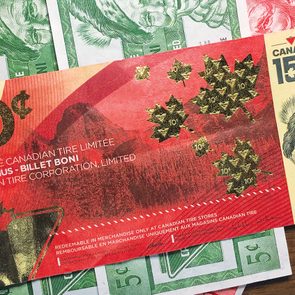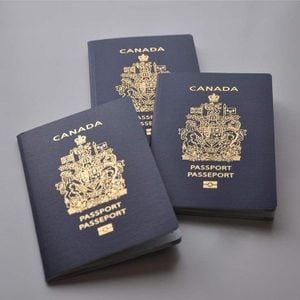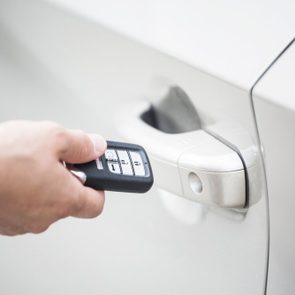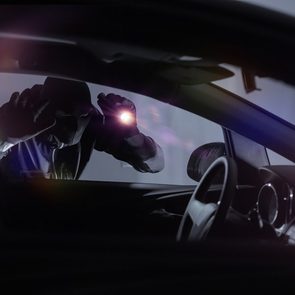With so many political posts and inflammatory debates taking up social feeds, the urge to unfollow or unfriend certain Facebook friends isn’t all that uncommon, or even surprising. And you better believe others have the same feeling towards you. But that statement alone is enough to have you wondering how to see who unfollowed you on Facebook.
Unfriend vs. Unfollow
The first question we have to answer is, what’s the difference between being unfriended and unfollowed—or even worse, being blocked? Unfriending someone completely separates your accounts. They won’t be found on any friend list and nothing from their feed will show up on yours. Depending on your privacy settings, it can also mean that they can’t directly message you, but must request to send you a message instead. Unfollowing is a lot more subtle. You will remain on their friend list, but nothing they post will end up in your feed. They can still message you and you will still appear on their friend list. (Whether the sender shows up on your friend list or not, be sure you know how to protect yourself from Facebook Messenger scams.)
How to see who unfollowed you on Facebook manually
There are two ways to check if someone has unfriended or unfollowed you. The first is pretty straightforward: manually. Search your own friend list for a person you suspect has unfriended you, and if they don’t appear there, your suspicions may be correct. Of course, this person may have deactivated or deleted their Facebook account as well, so it may be best to avoid jumping to conclusions.
To check if someone has unfollowed you, Michael Vaughan, Digital Marketing Specialist at Emerald Digital shared a great trick with Reader’s Digest. “To check out your current followers go to the “More” tab located on your profile page and click on ‘Followers’,” Vaughan said. “If someone who’s still on your ‘Friends’ list is missing, it means they’ve unfollowed you.” (Find out why you should never link your phone number to your Facebook account.)
As for looking for who blocked you, search for your friend on the Facebook search tool, and if they don’t appear at all, it’s possible they’ve completely blocked you.
How to see who unfollowed you on Facebook automatically
It can be a lot of work to manually check your “Friends” and “Followers” lists. Unless you regularly monitor the friend count on your profile, you have no way of knowing when someone hits that “Unfriend” button. Luckily, a much easier way to find out how to see who unfollowed you on Facebook exists.
Enter Who Deleted Me, a Google Chrome and Firefox extension that checks your profile so you don’t have to. When you login with your Facebook account, the program saves your current friends list, then it rechecks the list whenever you click on the app and lets you know if there are any changes, i.e. when someone unfriends you. It has the added benefit that it also makes a distinction between those people and friends who just deactivated their accounts. Sarah Evans, owner of Sevans Strategy & Sevans Digital PR, recommended this extension, with the caution that the application is still in beta testing, meaning there are some kinks to work out. “You’re allowing a third-party access to all of your Facebook contacts, so it’s something to be mindful of,” Evans said.
Next, find out why you need to stop commenting on viral Facebook posts.

Toby
The year 2020 was a momentous one for me. I welcomed my first grandchild, turned 60 and retired from a long career as a librarian. Tragically, it was also the year my 29-year-old son, William, died suddenly. Each event was impacted by COVID in different ways: I couldn’t see my grandchild in person, couldn’t have a birthday party or retirement party, and the funeral for my son had to be kept to 50 people—though a lot more attended it virtually.
My husband, Mark, and I already have an 11-year-old golden retriever/Lab mix named Gus. I was convinced he would be our last dog. Then my mind started picturing just one more for us. This last year has made me realize just how much a pet gives you: unconditional love, a place to focus your energy, and something to care for. That’s how we ended up with Toby, our chocolate Lab. He’s a treasure and brings me joy during these unusual times in which we live. —Lynne McAvoy, Ottawa, Ont.

Sunshine
Since my partner, Laura, and I adopted her on a bitterly cold winter’s day last March, our fierce little bearded dragon has warmed our hearts and gained a huge place in our household. Choosing her name was a source of hours of animated debate. Groot, Smaug and Drago were all rejected for the name that perfectly suits her personality and colouring: Sunshine.We feed her crickets and blueberries and give her baths. Her health and welfare dominate dinner conversation. Meanwhile, our little dragon has grown and grown and grown! She’s now 250 grams. She’s been the perfect pandemic pet—we are so busy caring for her there is no time for doom scrolling. —Bill Urquhart, Kanata, Ont.

Lola
Last February, I adopted from my neighbour a goat whose mother had died after giving birth. As a former farmer, I could see that the kid was hypothermic, and I didn’t give her very good odds of making it through the night. My husband, Wayne, and I put her in a laundry basket in front of our roaring wood stove, and after a couple of hours, she eventually stopped shaking. The next morning, when she poked her head out of her basket and looked at me, it was a relief.Over the next month, she grew stronger and healthier, and soon we had a tiny, sassy little scrap of a goat. We named her Lola. I started posting about her progress on my Facebook page, and people would tell me how it was the first thing they looked for each morning. Lola was raising spirits, helping people cope with not only a bleak February, but pandemic restrictions, too. Now nine months old, she’s happy, healthy and hilarious. We love taking her for walks in our neighbourhood. When she’s had enough, she will just lie down where she is, and there’s nothing we can do until she decides to get up again! —Sharon Shuttleworth, Rock View County, Alta.

Peanut
In 43 years of married life, we have almost always had a pet: dogs, cats, budgies, hamsters and a rabbit. What can I say? We are animal lovers! Our last cat, Danny, died about two years ago, before COVID hit. Last year, we felt it was time for another pet, only to discover how difficult it was to find one—every store and shelter had a waiting list. Finally one shelter told us they had a newly arrived four-month-old kitten with medium black fur. It was love at first sight all round, and we were given permission to take him home that day. We named him Peanut after South Africa’s Black Cat brand peanut butter. Two months later, we took him to be neutered. An hour later, we received a call from the vet saying there was a surprise. Peanut was a girl! So Peanut was a “she-nut,” and her surgery took a little longer. She is one feisty cat. She fetches toys and dumps them in her water bowl. She also meows like crazy when one of us leaves the house. At 10 months, she has finally been trained to not attack our legs. It has taken a while! We have always preferred male cats, as they seem to have a gentler disposition. But once she was in my arms, male or female, she was ours. We love her to bits and wouldn’t change a thing. If you look closely at her photo, you’ll notice that her eyes are the colour of…peanut butter! —Dorothy Thorpe, Fall River, N.S.

Jax the Newfoundland, Gunner the Miniature Australian Pit Bull and Star the Calico
Last summer, our daughter and her family downsized to a cabin on a lake with a much smaller yard and no fence. They asked if their dogs, Jax and Gunner, and 15-year-old calico cat, Star, could come live with us on our farm. We said yes and have enjoyed their company ever since. The dogs love to go for truck rides and have lots of room to run around and wear off energy. Star likes lots of attention and follows me until I sit and pet her while she is purring, as happy as can be. They are great company and sure have helped pass the time as we are pretty much stuck at home. —Lynne Heck, Mountain View County, Alta.

Guinness the Border Collie
When the first pandemic lockdown happened, our daughter, Winter, came home from university. She had a lot of spare time on her hands, since there weren’t any summertime student jobs or much else to do. One morning she bounced into the kitchen with a great idea: the family needed a new dog. She’d found a breeder with a new litter of brown border collies. Ten weeks later, we welcomed our new friend, Guinness. Guinness immediately had us all caught up in his zest for life and need to just play. That’s not saying he couldn’t be a bit of a brat sometimes. He’d steal tissues from the pockets of my wife, Marian, and run away, even though he knew it was wrong. But he also takes us for long walks in the woods and gives the best nighttime cuddles.He’s now a one year old. He makes us smile and makes us laugh. He doesn’t have the formal title, but to us he is the best therapy dog ever. —David Muise, Grand Lake N.S
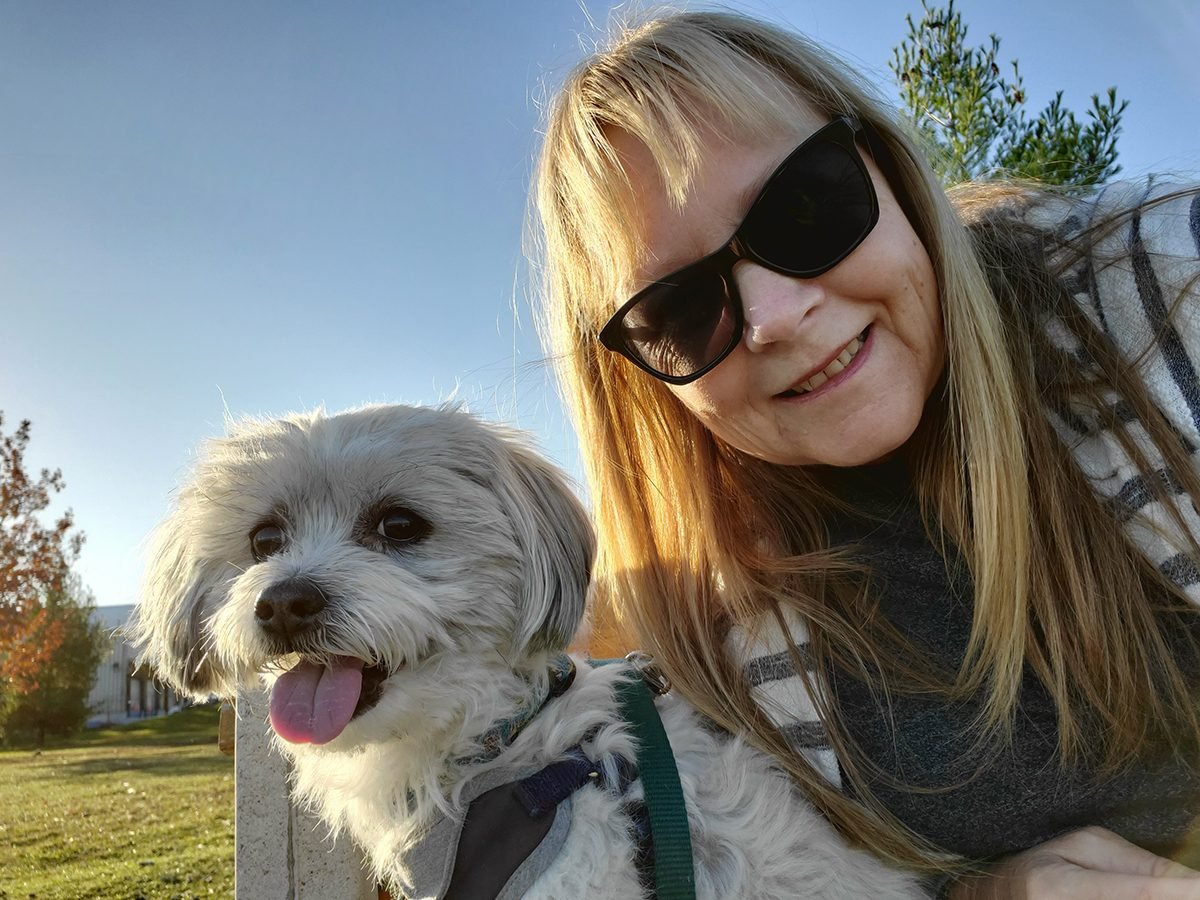
Charlie
Marlene Anderson of Midland, Ontario, adopted this adorable pup—Charlie—back in November 2020, and captured this sweet selfie on the day of the adoption. “We bonded immediately, and basically we rescued each other,” Marlene writes. “He is a six-year-old Maltese Shih Tzu mix. He is definitely keeping me sane during these isolated times.”

“It’s like we’ve been together for the full six years of his life,” Marlene says, adding, “He’s a perfect walking companion!”

“I was a little hesitant at first about adopting a rescue dog since you don’t know anything about their past, but Charlie is so loving and we are a perfect fit,” says Marlene. We’re so happy you found each other!
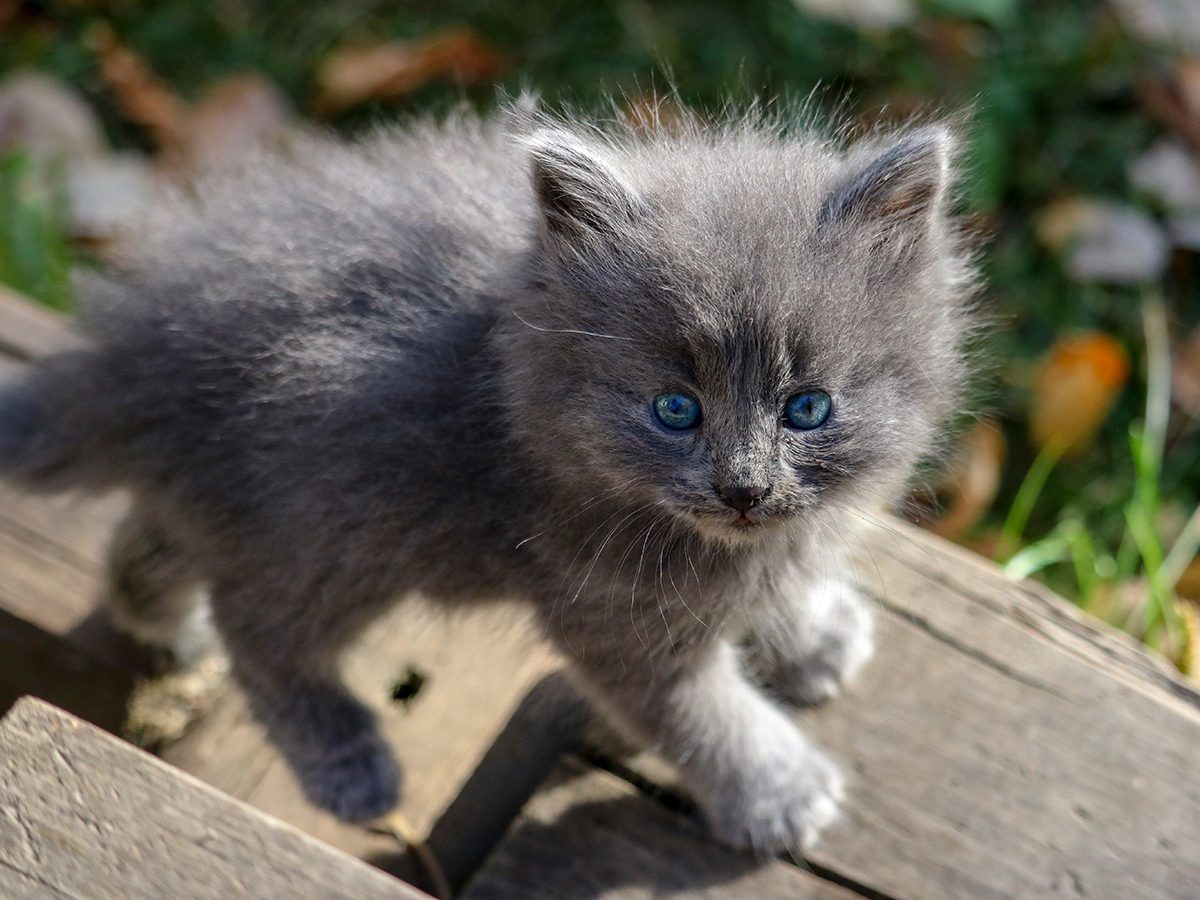
Spruce
Altogether now—“Aww!” This impossibly cute kitten found his forever home with Rebecca Bromberger’s family in Barrhead, Alberta during the pandemic. Even the story behind his name is sweet: “We found him abandoned under a spruce tree,” Rebecca writes. “He is now a very happy inside kitty.”
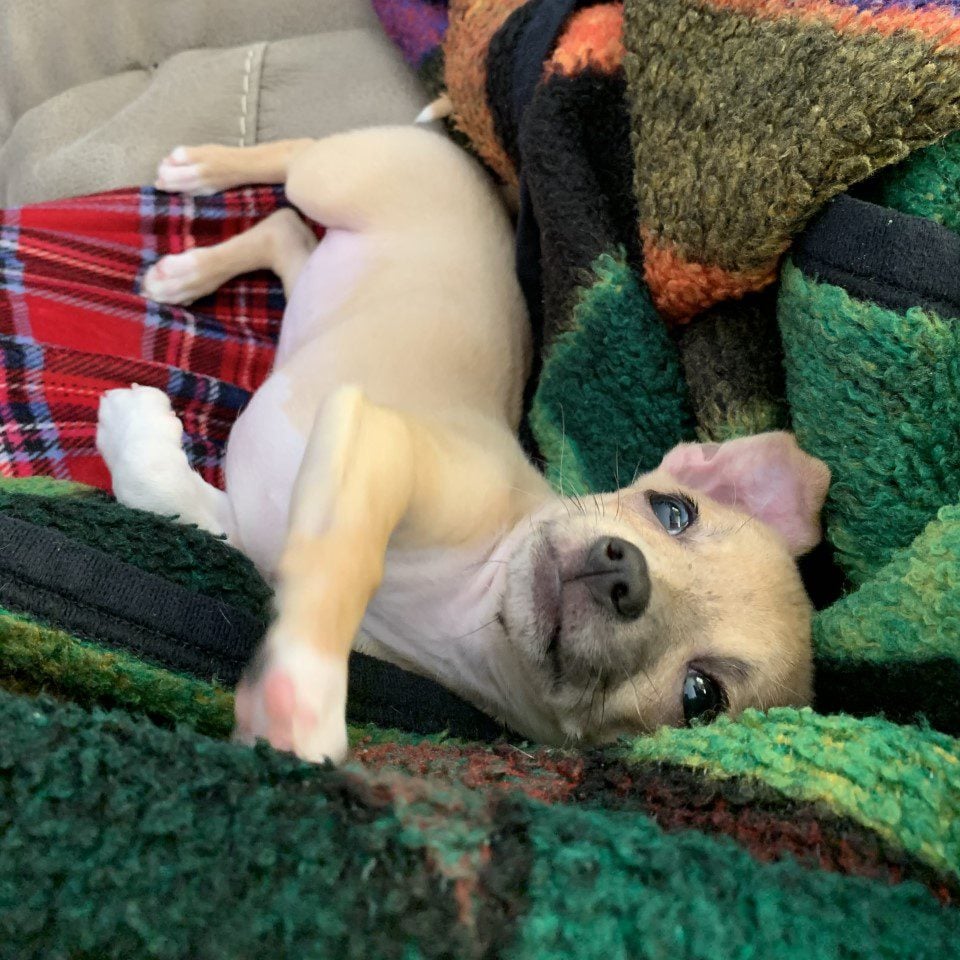
Kona
How could you ever say no to that little face? Kona was welcomed home by Dan Wever of Grande Prairie, Alberta back in October. “She is full of energy and is turning out to be a great companion,” Dan says. “Having a pet in these trying times with the pandemic is such a great stress relief.”
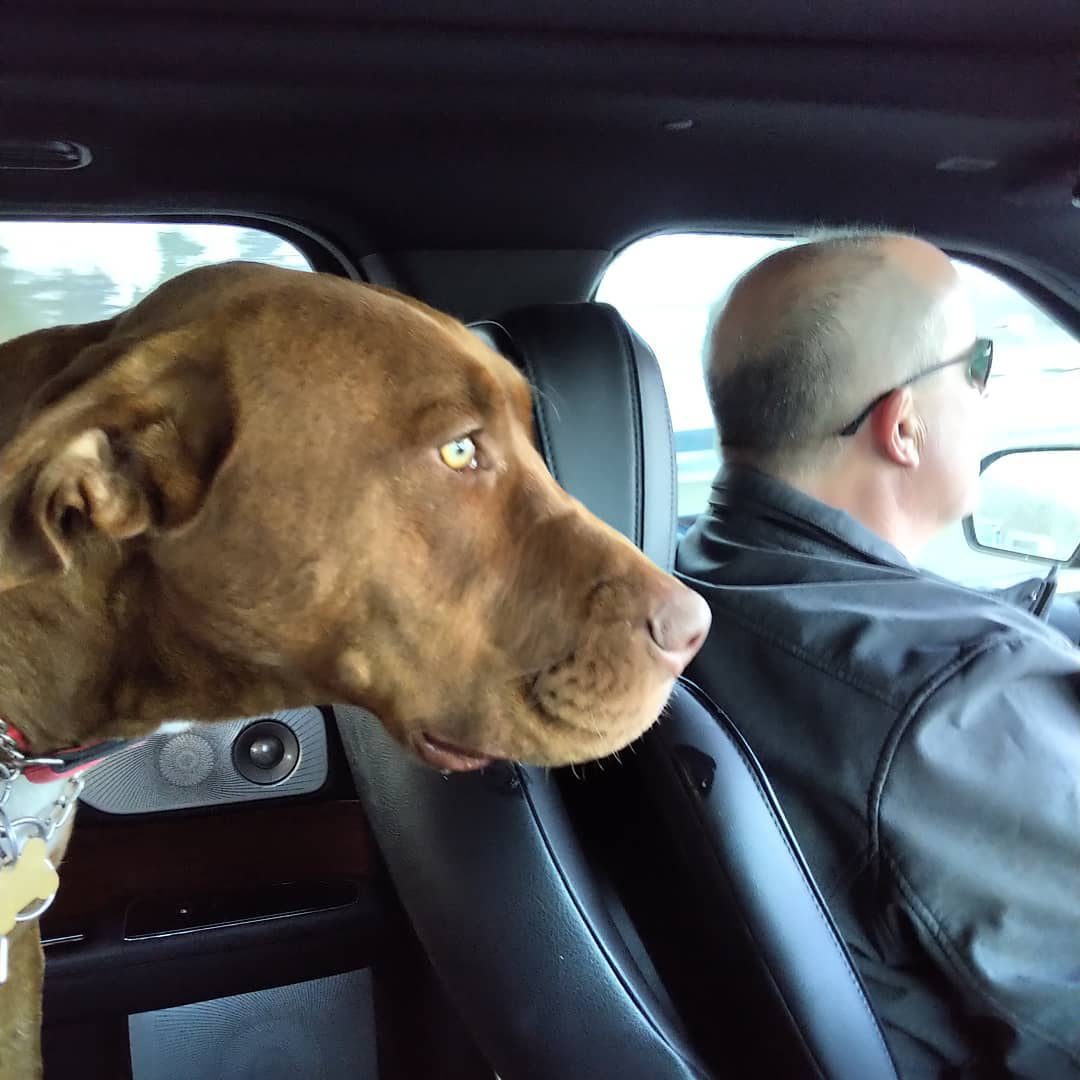
Baxter
Welcome to Canada, Baxter! Sheila Drury of Mount Hope, Ontario, captured this sweet shot of her Texan-born fur baby en route to his new home. “What is he thinking?” Sheila muses. “‘Jim, watch out for that transport? Or what is all that white stuff on the ground? They didn’t have that in Texas!'” We hope this handsome boy is settling in nicely, Sheila!
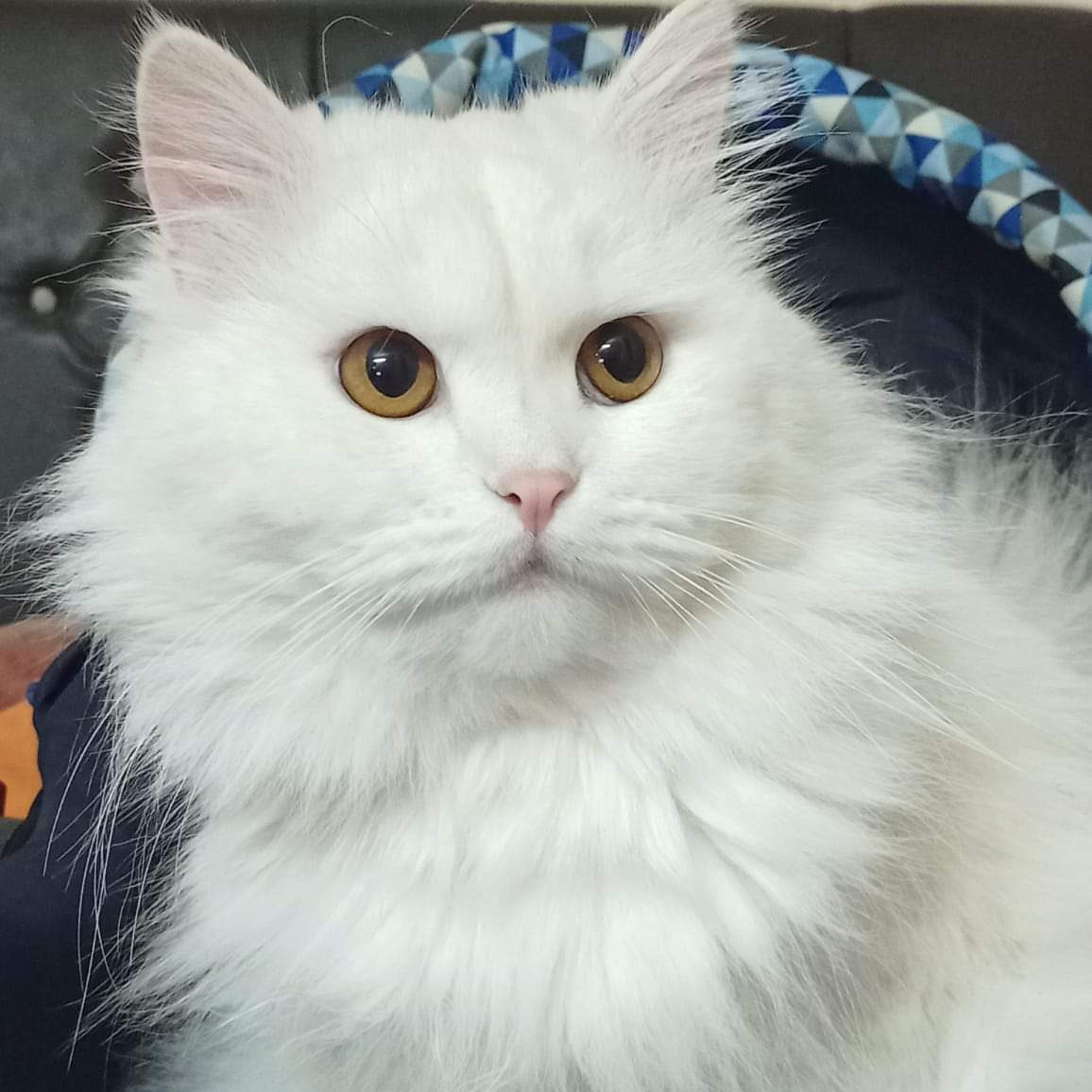
Cairo
Bev Colwell of Oshawa, Ontario is eagerly awaiting the arrival of this majestic feline, who’s got quite the journey ahead of him. “I am adopting this gorgeous cat from a rescue group in Egypt,” Bev writes. “He will be arriving soon, with a group of cats rescued from the streets.” She’s even got the perfect new name lined up for him—Cairo!
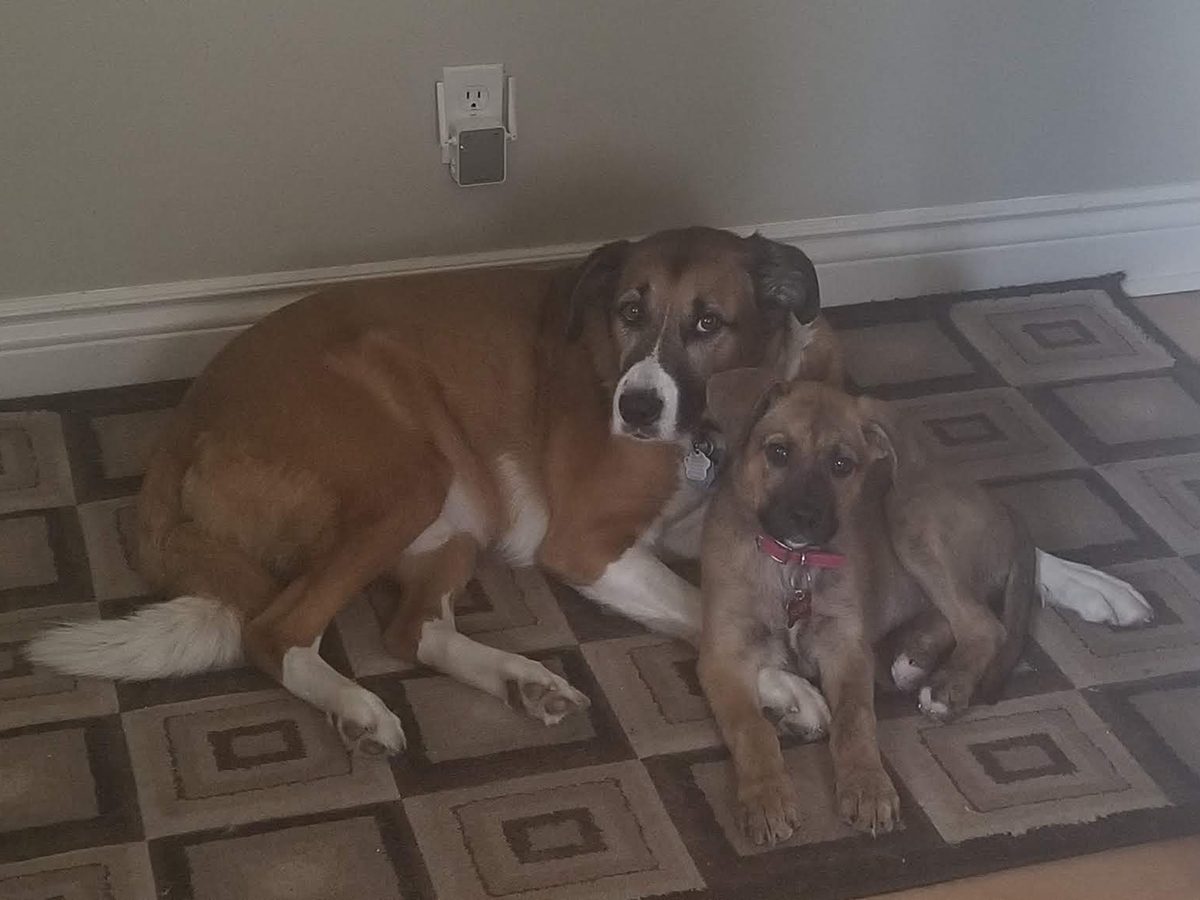
Roxy
Rescued from a box at the side of the road, Roxy is one lucky pooch to have found a home with Christine Cobel of Whitchurch-Stouffville, Ontario. “Roxy is sweet, affectionate, smart and playful,” says Christine. “She is the love of our lives and I keeps 11 year old rescue, Sam, great company.” They already look inseparable!
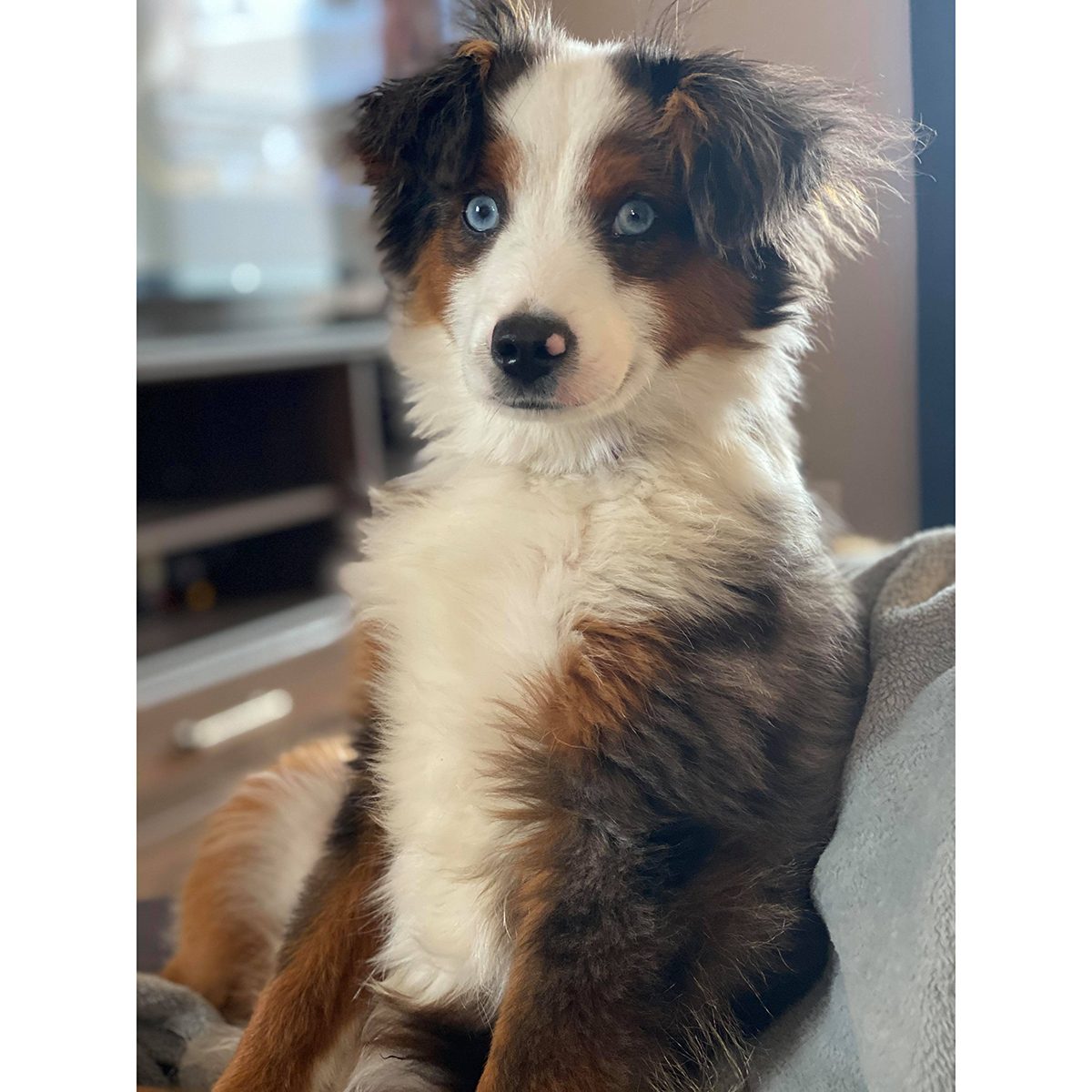
Koda
“My daughter’s puppy Koda travelled from Ontario to Blanc Sablon, Quebec, back in March 2020,” writes Tammy Green. “Once he arrived, the whole family took to this little guy.” Having clocked more than 2,000 kilometres on the journey, that’s one well-travelled pup!
Next, read the heartwarming story of how adopting a puppy helped one family through the pandemic.
In many ways, it’s safe to say that Queen Elizabeth is not like us common folks. Not only does she own a lot of swans and dolphins (seriously!), nearly 50 places around the world are named after her, too. (Find out 20 more little-known facts about the Queen.) However, Her Majesty does have one quality that we can all relate to: She enjoys Christmas just as much as we do. She loves it so much, in fact, that she participates in every single one of these royal family holiday traditions.
The Queen’s holiday season isn’t exclusively reserved for her family, though. In addition to her annual Christmas speech that’s broadcast throughout the world, she also makes time to celebrate with her royal staff members.
Each December, Queen Elizabeth gives each member of her 550-person staff a gift or book voucher, each loaded with a dollar amount that varies depending on how long they have worked in her service. She also gives them around 1,500 Christmas puddings to share between them, according to the official royal website. (For all the math pros out there, that’s nearly three puddings per person!) Every gift comes with a little extra something: a greeting card from Queen Elizabeth. (Check out these rarely seen photos of the royal family throughout the years.)
Like many other procedures in the British monarchy, however, there is a strict protocol regarding how the employees receive their gifts, according to the Express. A senior officer calls out each person’s name according to their rank, starting with the most senior household staff. Then, the Queen personally hands each staff member his or her gift.
The palace staff aren’t the only ones receiving some Christmas joy from the Queen. Her Majesty also donates money to charities in Windsor, plus offers Christmas trees to churches and schools around the United Kingdom. Now that’s what we call the Christmas spirit!
Next, take a look back at Queen Elizabeth’s incredible life in 30 quotes.
In this piece, I have photographed a series of shots of locations in and around Ottawa, shooting each from the same perspective to illustrate the psychological difference day and night has on our psyche. Any piece of architecture or scenery will change in character depending on the time of day. Lighting plays a crucial role in defining the form and shape of a structure and how we perceive it. During the day, the light exposes an abundance of information while the evening drapes this knowledge like a mask, only allowing what it wants to portray. The direction of a light source can transform spaces and impact the way people feel in these spaces.
What is it that makes us marvel or feel relaxed about a location during the day, but an impending sense of foreboding prevails at the same location at night? Daylight can bring optimism and hope, yet the evening can translate into the spectacular or the sinister.


The evening has a unique quality that can transform the ordinary into the extra ordinary or make it seem dangerous merely by revealing less. There is a veil that hangs over silhouette monoliths of buildings or the same deep dark hue can radiate the kaleidoscopic sparkling of lights composed of a city skyline or a building. It can be a sight of wonder by projecting the less defined. It is a scientific fact that nighttime’s strong psychological hold on us has decreased the number of people walking due to our innate feeling that danger is associated with the unknown. Though increasing the average luminance is linked with improved safety, uniformity is more important for making people feel secure. So it might be more prudent for municipalities to have evenly distributed lighting rather than bright lighting, to make people feel safer.
Things, even buildings, become strangely anonymous at night. The evening emits psychological walls and borders, permitting pools of light or colour to be the only source of company. According to the 2014 results of authors Kushnir, Gothelf and Sadeh, our nighttime fears depend very much on a person’s own personal history through actual experiences, our parents’ advice and the influence of the media.


Daylight is as much about identity as it is about improving cognitive performance, recognition and mood. Light creates more than just visual effects (image, shape, intensity, perception and contrast), it also has biological and psychological implications that can impact the health and well-being of humans, such as how colour, design, shape and openness are deliberately designed to enhance mood. An example of this is the Boley Building department store built way back in 1909 in Kansas City. It was the first of its kind, constructed in the art nouveau style by architect Louis Curtiss. What was notable was how Curtiss heavily depended on light by using a skin of glass to cover 80 per cent of the exterior, emitting an abundance of light to be displayed inside. As a result of this novel design, it attracted crowds of thousands to its opening day.


Daylight can be used to showcase a building’s elements, spaces and textures. By exposing detail (or detail the architect deliberately advertises), daylight conveys a wide spectrum of moods, from inviting to intrigue, or repulsion to one of being sombre. Studies have shown that brighter light can intensify emotions, while low light doesn’t remove emotions, but merely keeps them steady. This can lead to people having the ability to make more rational decisions in low light and find it easier to agree with others in a negotiation.
Saturation is the intensity of a colour. More saturated hues can have amplifying effects on emotions, while muted colours can dampen emotions. The brighter the light, especially white, red or yellow, the more it will catch your gaze. In addition, daylight allows us a better visual perspective, enabling us to grasp a three-dimensional view, allowing for better comprehension.
The profound psychological impact that light and colour have on us is amazing.
Next, check out the photography tips you should always follow when shooting in black and white.
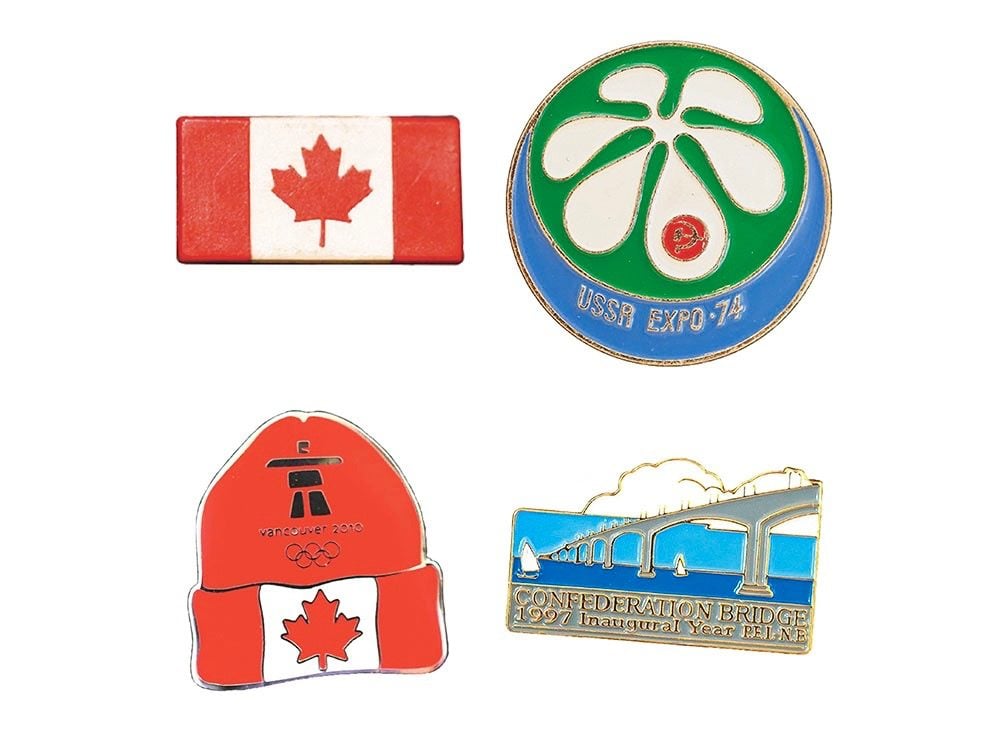
Meet the collector of rare pins
On May 4, 1974, as fireworks boomed overhead and 50,000 helium balloons floated upwards, the words of U.S. President Richard M. Nixon rang out, “It is my high honour and privilege to declare Expo ’74 officially open to all citizens of the world.” More than five million visitors attended the world’s fair, the first one to be based on an environmental theme: “Celebrating Tomorrow’s Fresh New Environment.” Ten countries, including the Soviet Union, Canada and the United States, hosted pavilions on the 100-acre site near Spokane, Wash.
Our family did not have a lot of money in the early years. In fact, our home consisted of two granaries that were pushed together. Lengthy trips were not the norm for us, but Mom and Dad felt we should take a road trip to attend Expo ’74. At only six years of age, I had no idea what this trip would have in store for me.
I remember the magnitude of the buildings with their white tilted vinyl canopies, and swarms of people from every culture mingling together and sharing their stories.
We first attended the Canada Pavilion on what came to be known for a time as “Canada Island.” The entire island was an outdoor exhibit featuring playgrounds, totem-carvers, and an open-air theatre. The pavilion was noted for having a perfect display for an environmental theme.
Mom’s parents came from the USSR, so we had a considerable interest in attending the 54,400-square foot Soviet Pavilion. Greeted by a massive statue of Lenin’s head, we walked into this mirage of spotlights. One kind man approached us and talked with our family extensively before getting down on one knee and speaking directly with me. He removed the USSR Expo ’74 lapel pin he was wearing and placed it into my hand. He said, “This is for you.” I was elated with this colourful pin. I cherished it and carefully carried it with me until I returned home. That gentleman’s act of kindness started me on my pin-collecting journey, and, with more than 400 pins to date, my collection is still growing. Ever since the USSR dissolved in 1991, this particular pin has become quite vintage and rare.
I have also begun different pin collections. They consist of international pins, sports pins, Olympics pins and awareness ribbons.
With such a vast collection, I have organized all of my categories into separate, special binders with pages made from thick, reinforced cloth. I have them all organized with one theme per page. All of my Olympic pins are on one page and all of my international pins are on another. Believe it or not, I have one entire books designated for my Canadian pins.
Every pin I own has a different shape and size and each of them are designed with beautiful graphic art. This is what compelled me to keep collecting. My many pins have come to represent a series of memories, things I’ve done, places I’ve worked, specific travel destinations and even memories of people. A great example I always fall back on is of my “Ward Willard Calgary Stampede Wagon” pin. Mom taught Mr. Willard in grade school and he has now passed away, so it is a great memory of all the years our family watched him compete in the Rangeland Derby.
Favourites from my rare pin collection
Now my main focus is on completing my collection of U.S.A.-state-shaped pins and those from new travel destinations. Although my set of Canadian provincial pins were the most memorable to collect, I do have a few individual favourites because of the particular memories they bring.
Each pin has a different story and meaning. Each involves people, culture, nature or the environment, much like the “breakthrough” environmental theme of Expo ’74, where it all started for me.
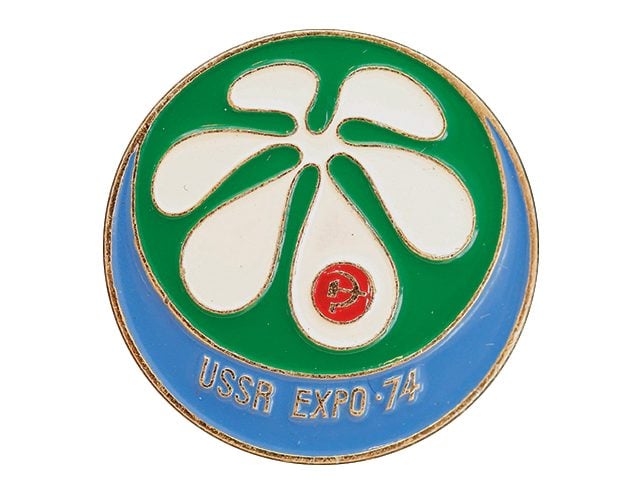
USSR Expo ’74
A symbol of how the kindness of an individual from across the world, and a different culture, could impact a life. “Do a deed of simple kindness; though its end you may not see, it may reach like widening ripples, down a long eternity.” — Joseph Norris
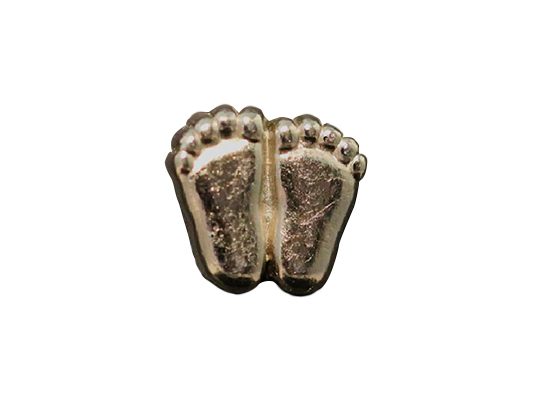
Precious Feet Pin
These are the exact size and shape of an unborn baby’s feet at ten weeks after conception, and it has been used as the International Pro-Life symbol. Being adopted, I’m grateful that my birth mother chose life for me.
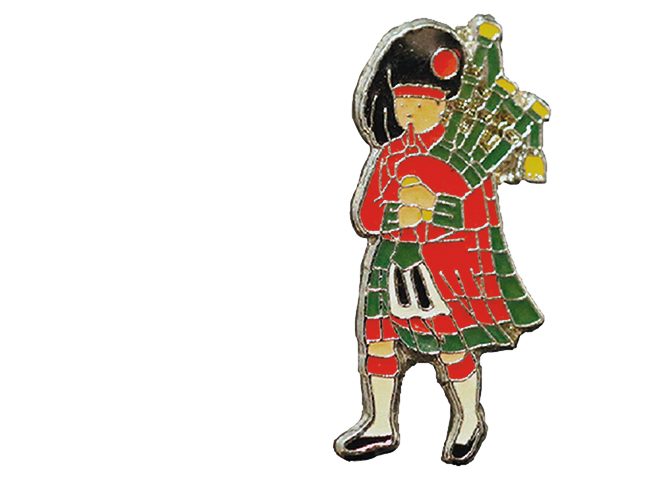
Scottish Man
Dad loved everything Scottish—even Scottish jokes. His special love was the bagpipes. He never played them, but it was his dream to be able to one day. I picked this pin out with my dad on a trip we took to visit his family’s roots in New Brunswick.
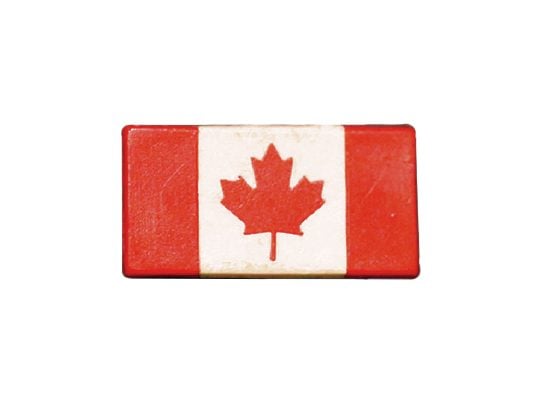
Canadian Flag
I waited until this past year to add this latest pin to my collection. At only .5″ x 1.0″ this is one of the smallest ones I have. Mom didn’t wear jewellery except for her wedding rings and this one tiny Canadian flag pin. When she changed her shirt or coat, she adjusted the pin to suit what she was wearing. Last year, as mom was facing her last days in the hospital at age 89, she asked me to get her flag and pin it onto her hospital sweater. She wore it proudly to the very end.
Next, check out this Canadian’s incredible phonograph collection.
Thousands of drivers lock keys in cars each year—and now you’re one of them. Luckily, newer cars make it much more difficult to do this, but if you find yourself standing outside your locked car with your keys sitting in the cup holder, these tricks can be lifesavers. Before you send out the “locked keys in a car” SOS text, learn how to unlock a car door without your keys with these simple (and cheap!) methods.
What do I do if I locked my keys in the car?
Rest assured that “it’s getting far more difficult for consumers to get locked out of their cars, as most transponder keys won’t allow that to happen,” according to Mark Takahashi, senior reviews editor at Edmunds. Brian Moody, executive editor at Autotrader, agrees: “The idea of locking keys in cars is becoming a thing of the past.” If you do get locked out, calling a locksmith, roadside assistance service, or the police might be your best bet, depending on the situation’s urgency, Moody notes.
Does CAA unlock your car?
Roadside assistance providers like CAA can come in handy when you’ve locked your keys in the car, Moody says. If you find yourself in this situation, call CAA and let them know your location, the make and model of your vehicle, and your membership number. However, keep in mind that a professional may take a half hour or more to arrive, and you will have to pay out of pocket if you don’t have this coverage in your membership plan.
How do you unlock your car with keys inside?
Want to avoid an expensive call to a locksmith or roadside assistance professional? Fortunately, there are several cheaper tricks to unlock your car without keys, as long as you are patient and good with tools. Here’s how to get your keys out of a locked car—no locksmith required.
How do you unlock a car with a cell phone?
Thanks to a growing number of car apps for your smartphone, you can unlock your car without breaking the bank—or a window. Many new vehicles offer free Apple and Android apps that allow drivers to control their cars sans keys. The apps turn smartphones into second key fobs, so users can lock, unlock, and even start their cars remotely. “The key is to pair [your car key] with the app before you lock yourself out,” Takahashi says. If you own a new car model from Hyundai, GM/Chevrolet, Nissan, Toyota, Subaru, Ford, or Honda, install the manufacturer’s app for the next time your keys get locked in the car. Here are more hidden car features you might not realize you have.
Use string
Good news: If you own an older car with manual locks and you’re wearing shoes with shoelaces, you might not need to call roadside assistance. Just tie a slipknot in the middle of the shoelace, creating a loop the size of your index finger. Then wiggle the shoelace around the right corner of the driver’s side door until the slip knot is inside the door’s seam. Now, holding the shoelace with both hands, move it in a back-and-forth motion like you’re flossing a giant tooth. Doing so will shift the slip knot further down the window and toward the lock on the car door. Carefully manoeuvre the loop over the lock, then pull the ends of the string to tighten the loop. When you think you have a solid grip around the lock, gently pull up on it to unlock the car door. Ta-da! You’re in! (You can also use a sturdy piece of string in lieu of a shoelace.)
Try a coat hanger
The coat hanger method is a classic; you’ve probably seen it used in a few movies. Like the shoelace trick, this method only works on older vehicles with manual locks. All you will need is a thin wire coat hanger and pliers. “Use the pliers to unravel the coat hanger so you have one side hooked and one that’s straight,” says Laura Gonzales, a marketing manager at Audi Bellevue. “You’re going to slide the coat hanger between the window and the weather stripping. Once the hook is below the window, you can start fishing around for the control arm. Once you find it, pull up with the hook and your door will open.” (Worried someone will try this trick on your ride? Follow these five car security tips to protect your vehicle.)
Use a wedge
To unlock a car without keys like a pro, invest in an automotive toolkit with a curved or inflatable window wedge. Just be aware that using a wedge to unlock a car can be a little tricky, warns Bill Evans, manager of J&E Auto Body in Clark, New Jersey. Start by pulling the top of the door frame out with a pry tool and pushing the wedge in to hold the door frame out. Then, using a long, skinny rod (it could even be a coat hanger), push the unlock button. “Triple A drivers and tow truck drivers usually do it this way, and that is how we do it also,” says Evans. This trick works on both old and new car models.
But there is a downside. “Even the experienced people will scratch the paint or tear the weather stripping during this process,” Evans says. “You may need to see a body shop to realign the top of the door frame since sometimes they remain bent out away from the body after the wedge is used.” Make sure the repair costs are worth it before using a wedge to get yourself out of your “locked keys in car” debacle.
Now that you know how to unlock a car door without your keys, check out troubleshooting tips for when your car won’t start.
